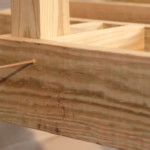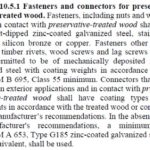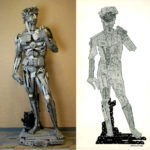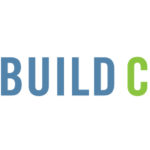In the past several years, there has been an increase in the use of screws in applications that have traditionally been reserved for bolts and lag screws. Greater innovation in the wood screw market has caused this shift. Proprietary wood screws now offer many more benefits than commodity bolts and lag screws. Today, this post will discuss some of those benefits.
Two of the obvious drawbacks of installing bolts are preboring or predrilling a hole through the wood and ensuring that both sides of the connection are accessible. The drilled hole must be aligned properly in the wood, which is especially important for groups of bolts. When bolting a steel connector on each side of the wood, it takes a skilled hand to guide the drill from one side and hit the steel hole on the other side of the wood. Using proprietary wood screws instead of bolts can relieve the installer of this hassle. Because there is no predrilling, an installer can step up and drive in the screw. They don’t have to worry about lining up the drilled hole with the steel hole because the screws are driven into the connector on each side. This is a real benefit in many applications, such as installing ledgers and steel column cap connectors. Bolts also require washers between the head and the wood and between the nut and the wood. In an all-wood connection, the bolted connection requires a bolt, nut, and two washers or steel plates. Sometimes access from both sides is not possible or is not safe from the drilling position. Usually both the nut and the head of the bolt require a tool to tighten them, and that means using both hands where one may be blind. Proprietary wood screws are typically much faster to install and thus can reduce labor costs for the project.
Proprietary screws also are used as alternatives to lag screws in wood construction. Lag screw installation is included in the NDS, section 11.1.4. Lag screws greater than 3/8-in. diameter require a pre-drilled hole whether loaded in withdrawal or by lateral force. The required hole is a two-step hole. The hole for the shank is supposed to match the diameter and length of the shank and the part of the hole for the threaded shank depends on the specific gravity of the wood member and the relative diameter of the screw.
When comparing proprietary wood screws and commodity wood screws, it’s important to note that in the NDS, commodity wood screws have predrilling requirements that depend on the specific gravity of the wood. An installer cannot just grab a screw and drive it in. In some cases, there are two different diameters that must be predrilled, one for the shank and one for the threads, similar to lag screws.
When our engineers design a Simpson Strong-Tie screw, they go to great lengths so that the installer almost never has to predrill the wood. This is achieved by adding special drill tips, optimizing thread designs, and utilizing knurls or reamers that prepare the wood to receive the shank of the screw. For structural screws that require evaluation reports, qualification testing is performed with no predrilled holes so that the qualified loads are based on the installation instructions that require no predrilled holes.
The other factor our engineering team considers is the performance of screws in wood. Often, using a greater number of screws in place of larger diameter bolts or lag screws can increase the ductility of the failure mode, which is advantageous in certain applications, such as for seismic holdowns. The special features and manufacturing processes of proprietary wood screws can often result in allowable loads that are comparable to larger diameter bolts. These loads are typically determined through the testing and load rating requirements of ICC-ES AC 233.
As more types of screws are developed and more conditions are tested, proprietary screws will continue to replace bolts and lag screws in applications, including ledger connections, pile construction, girder truss and beam connections, steel connector installations, and many more.
Have you made the switch from commodity bolts and lag screws to proprietary wood screws? Let us know how you are using them or tell us how we can support a new application in your market.





